Yum tour anyone? If you’re planning to skip a meal, get your guts together and follow us through a culinary journey of unexpected ingredients (i.e. nasty food) that for some reason have made it onto menus around the world.
You’ve been warned! We’ll find the most repulsive dishes to confirm that one man’s waste is another’s delicacy, and how inventive people are in times of food scarcity. Ready? Prepare to be repulsed!
1. Casu Marzu (Maggot Cheese) – Italy
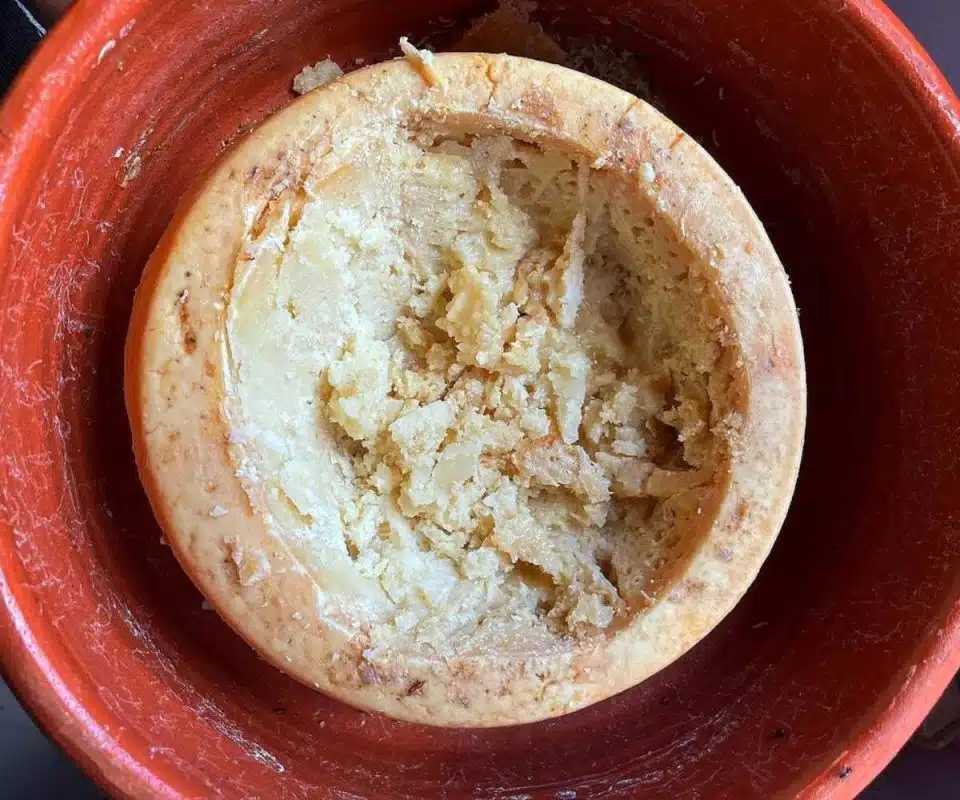
Literally translated as “maggot cheese”, Casu Marzu deserves its reputation world’s grossest cheese.
This Sardinian specialty was made from Pecorino cheese that can be a natural breeding grounds for maggots. The top of the sheep cheese block was removed like a lid so that flies could lay their eggs inside. The larvae of cheese flies would burrow around and digest the fats. This process would be so advanced that the cheese would develop a soft, liquid texture, close to complete decomposition.
It remains uncertain if the pungent smell was what would cause people to weep or if it was the fear of live maggots jumping off onto the eater’s tongue.
Although this is a generations-old culinary delicacy with roots buried deep in the history of this beautiful island, don’t let it put you off visiting. Casu Marzu does not meet modern standards of safety and hygiene and has been declared illegal.
2. Balut – Philippines & Vietnam
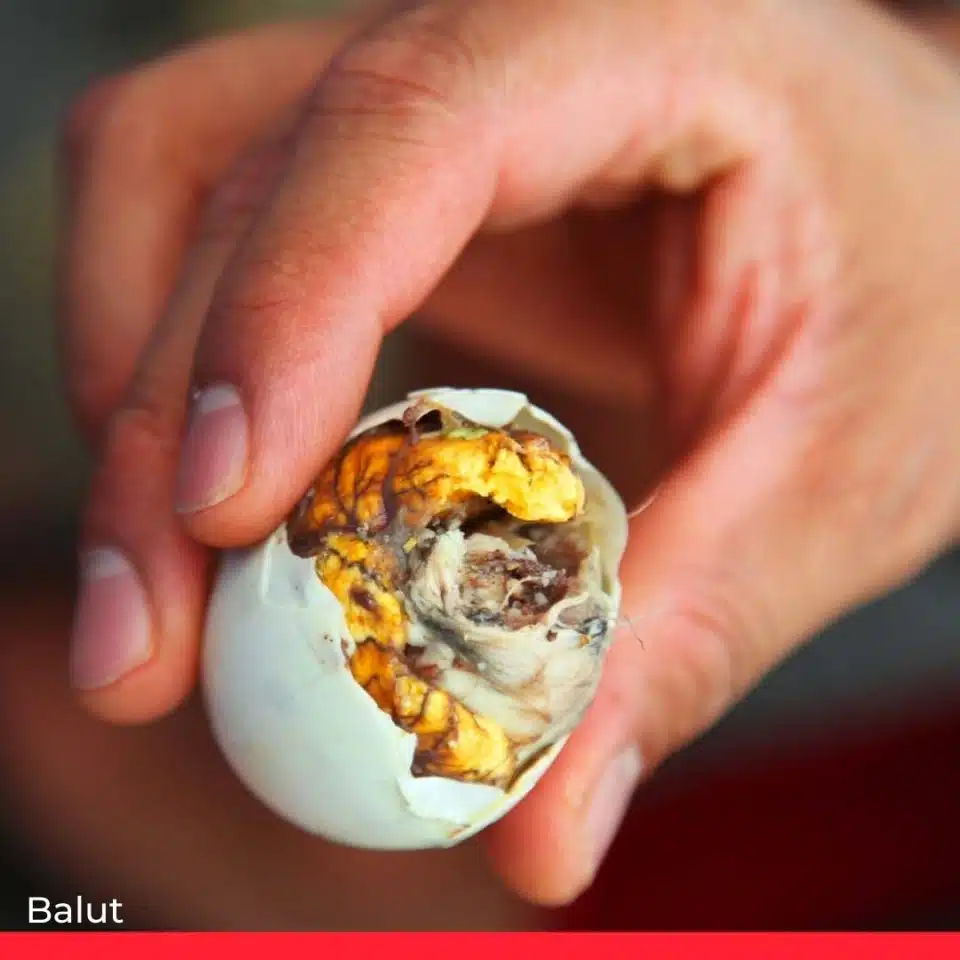
Balut is a chicken or duck embryo, partially developed, boiled alive and eaten straight from the shell.
This Vietnamese and Filipino delicacy is prepared on special occasions and religious festivals but can also be found at street vendors – it’s a much sought-after dish with tourists looking for something icky to tell the folks back home
To eat Balut you are supposed to tap a hole on the top, slurp out the liquid (flavored with a little salt and vinegar) and then, if you can ignore the little duck face inside, you crunch down the bones, feather and the rest.
This staple dish is a favorite among local beer drinkers and is believed to have aphrodisiac powers. Cheers?
3. Hákarl (Decomposed Shark Carcass) – Iceland
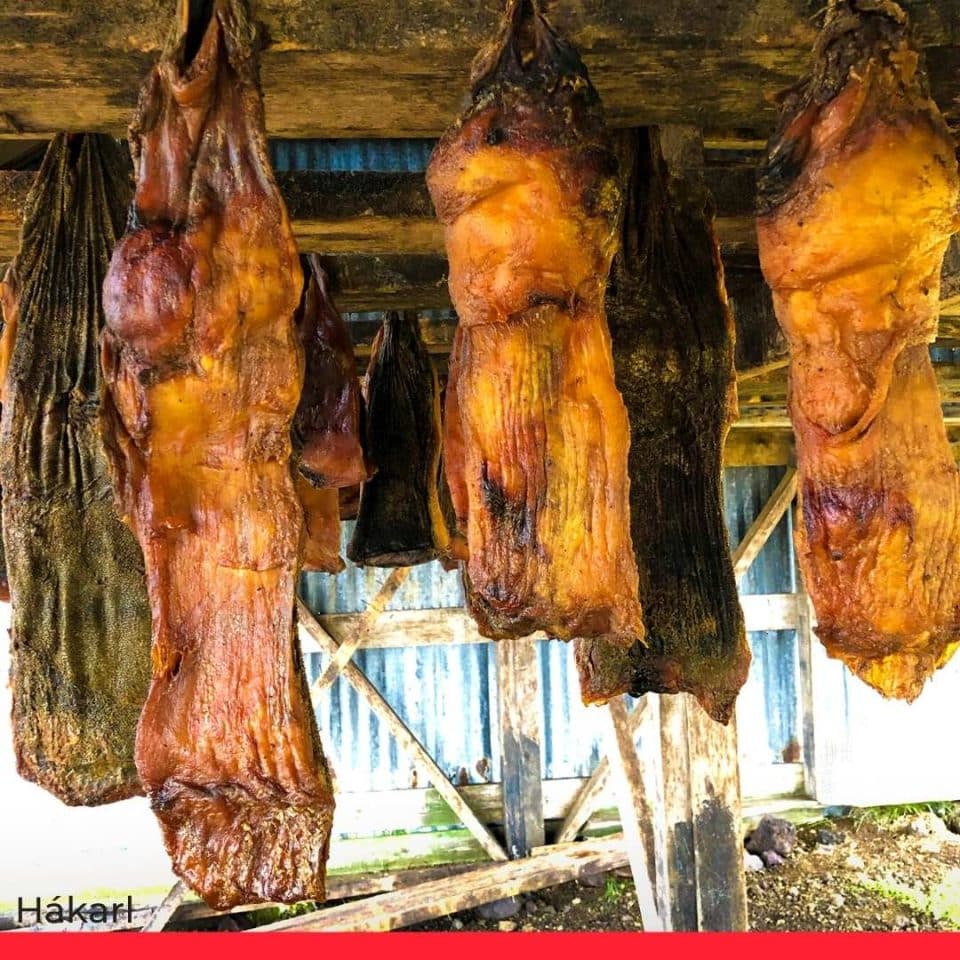
This is a decomposed shark carcass that tastes like strong cheese and smells like urine.
It was invented by the Vikings at a time when they had to conserve as much food as possible. The preservation technique they developed is still used today.
Untreated Greenland shark is very toxic to humans. So the locals bury it underneath rocks and sand which press away the poisonous fluids ( uric acid and the trimethylamine oxide). The flesh is left to ferment from 6 to 12 weeks and then is dug up and hung to dry for several months.
The first encounter with hákarl is a full-on assault to the nostrils from a putrid smell. Bold tourists that dare to sample it are advised to hold their breath and try not to gag at the taste of one of the most rancid things on planet earth.
If you want to learn more about Icelandic cuisine check out our article about the most popular foods on this fascinating island.
4. Jibachi Senbei (Wasp Rice Snack) – Japan

Fancy a snack? This new rice cracker is creating a buzz on Japan’s streets.
A ‘Digger Wasp lover’ group (yes, it does really exist) brainstormed with a local biscuit maker and came with the wasp rice snack.
It’s not complicated to make. Wasps are boiled in water, dried and then added to the cookie mix.
The finished cookie typically has a mild sweet-savory flavor,and the wasps themselves can be confused with burnt raisins – but with a bitter, acidic note. And wings. And legs.
If you’re in need of a protein boost this cracker has you covered because it contains 81% protein compared to 20% in an average cookie So, if you’re heading to the gym consider taking a bag of wasp cookies and stick to your keto lifestyle
5. Virgin Boy Eggs – China

Don’t be alarmed, they’re not literally cooked children, as the name implies.
This wildly popular Chinese spring delicacy, especially favored by locals in Dongyang, combines eggs with one key ingredient: the urine of boy preferably aged 10 or younger.
Buckets of boys’ urine are collected from primary school toilets in the area and the whole process of cooking takes an entire day.
First, raw eggs are soaked and boiled in the golden liquor before the shells are cracked and left to shimmer for a few more hours.
You can buy them from the street vendors but locals make them at home, too. According to tradition this unusual method of cooking the eggs offers health benefits such as improved blood circulation, reducing the risk of heat stroke and reinvigorating one’s body.
Anybody feeling down?
6. Warthog Anus – Namibia

This one took legendary chef Anthony Bourdain to his limits and he was known for eating just about everything that he was dared to. Although he rose to the challenge, he declared it was the “worst meal of my life”.
If you don’t believe in wasting unusual cuts of meat and you’re thinking that you’d like to serve warthog anus to your guests, get ready for some serious preparation. First, you have to pull it away from the carcass with the last one foot intestine attached, then squeeze out all the feces before throwing it in the open fire.
Don’t mind the ash and dirt; it’s a part of the process. This is one food you would like to be well cooked but actually to reach the height of gastronomic perfection it must be al dente and served right away.
Want some pickles with this one?
7. Cobra Heart – Vietnam
You have to be heartless to slit open a struggling live snake and a brave heart to try this unusual Vietnamese delicacy.
OK, enough with the heart jokes but why on the earth eating a beating cobra heart? It seems that man will do anything to acquire more virility.
Being so popular in Vietnam, many restaurants have captive cobras for customers to choose from.
If you are delusional enough to believe they will enhance your virility go for the shorter and thicker one with a feisty attitude. The heart is cut off and dropped in a shot glass of rice wine and snake blood. Bottoms up, enjoy the drink and feel the beating hart getting down your throat.
The heart is cut off and dropped in a shot glass of rice wine and snake blood
And this is far from being over. Your well-intentioned Vietnamese host will still be offering shots – but not what you’d expect. One is made from cobra bile and rice wine and the other is pure venom.
Don’t worry about the venomy one, though! Providing there are no cuts in your mouth, you’ll be safe to drink it. The stomach will process the cobra venom just fine and it only kills you if it gets straight into the blood. So at least you can know that every part of the cobra is being processed and served – nothing is wasted. And as cobras are an endangered species, this is at least some comfort.
Bon appetit!
8. Ptarmigan Shit – Greenland

In Greenland, if you tell someone he’s eating shit, they won’t be offended. In fact, they may ask you to join them!.
A ptarmigan is a beautiful white bridled game bird. The predigested willow and birch plants it excretes were a valuable source of food in some parts of Greenland when resources were very limited.
Now their excrement is considered a delicacy.
Each ptarmigan will defecate up to 50 times in one spot, so it’s easy to gather. Urumiit, the inuit name for the bird’s droppings, is collected in winter when it’s dr, rather than in summer when it’s all gooey and unpleasant.
After harvesting, it’s cooked in rancid seal oil and chunks of seal meat.
In the old days the women of the household would add a personal touch by masticating the meat and then spitting it back into the cooking pot. Sometimes the stew was mixed with ptarmigan meat or blood.
We only found feedback regarding the smell – and it’s compared to ripe Gorgonzola cheese.
9. Medama (Tuna Eyeballs) – Japan

Don’t be surprised when you take a look at the seafood department in a Japanese supermarket and some eyes stare back at you. That’s because tuna eyeballs are a popular delicacy in Japan that can be prepared in various ways: fried, boiled, stewed or lightly steamed.
Medama wasn’t born at a time of poverty when everything could become food. Rather, it was invented in the early ‘90s when Japan’s media was proclaiming the benefits of the DHA – or Omega 3. Tuna eyeballs contain a high concentration of Omega 3 and this led to a surge in demand. .
Most widely they are boiled in water and seasoned to taste with soy sauce, sugar, sake or mirin (rice vinegar). Under the rubbery shell there is a soft fatty substance. The flavor is reminiscent of squid or octopus, and the flavor is a bit like that of a hard-boiled egg.
Thankfully we don’t need to increase our consumption of tuna eyes to be more intelligent, and we can find plenty Omega 3s in many other dishes, even flaxseeds.
I’m sticking with these little fellows!
10. Worm Pretzels – USA

You can’t call yourself a New Yorker without trying this squiggly snack first (or maybe you can). Wormzels are a recent creation by Gene Rurka, an ecologically-minded exotic-food chef and former chairman of Explorers Club.
He concocted the recipe for the 100th anniversary Black Tie Gala, legendary for their unusual appetizers served every year. To make these special pretzels he sizzles dehydrated earthworms contorted in that particular shape and sells them in New Jersey.
11. Pidan (Rotten Eggs) – China
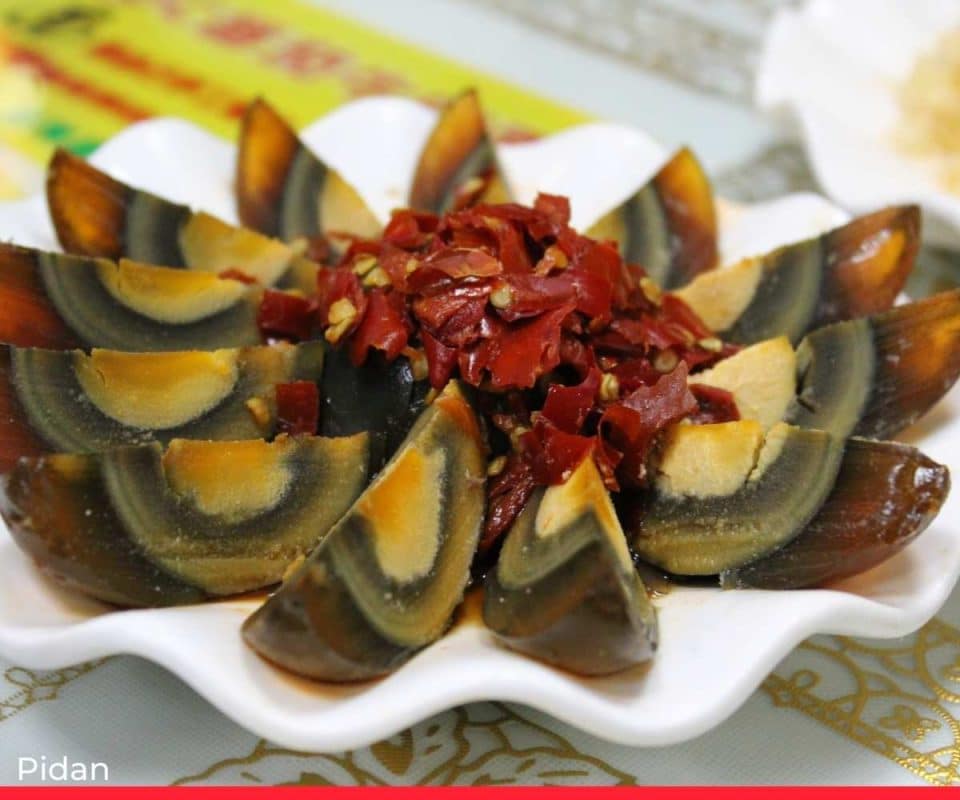
More commonly known as century eggs, black eggs or millennial eggs are rotten eggs that stink like sulfur.
They are covered in salt, clay and ashes, and left for 100 days to “cook” on their own. The yolk turns to dark green with a soft gooey center and the egg white is a translucent gelatin resembling soy sauce.
Sounds appealing? It is said that it tastes just like hard-boiled egg, only with a supercharged flavor that’s a dozen times more intense. Imagine a ripe camembert, pungent and creamy with a whiff of ammonia.
Century eggs have been around as far back as the Ming dynasty, but the story of how they were discovered is uncertain. Supposedly a man found some duck eggs submerged in slaked lime and despite their appearance he did think it was a good idea to try one.
Well, he obviously lived to tell the tale and Chinese people still really love them.
12. Fried Tarantula – Cambodia
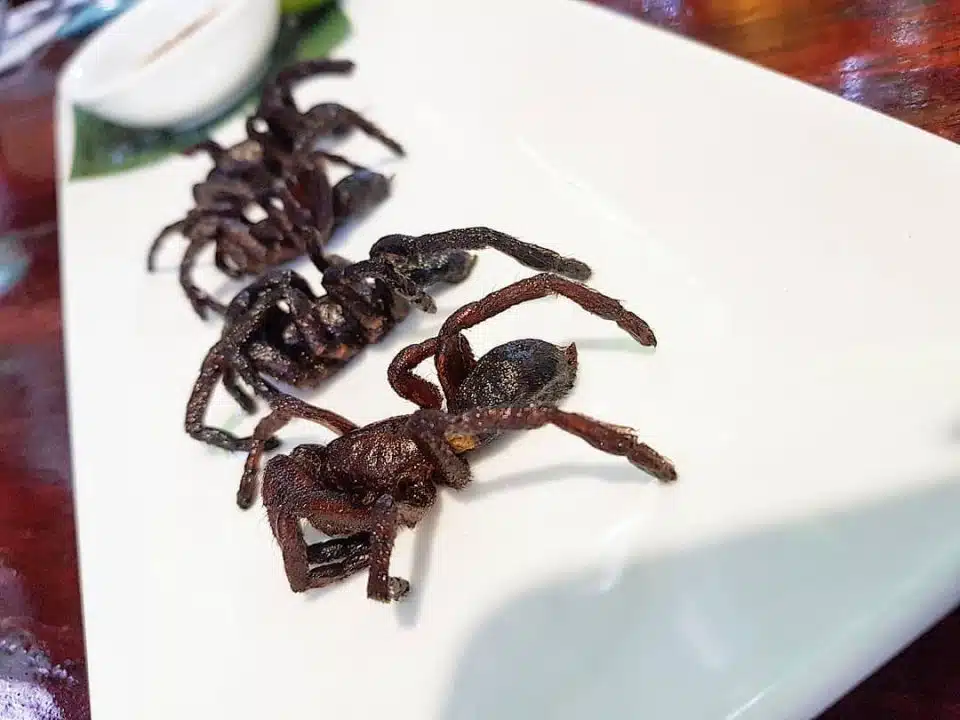
Would you try a special snack if I tell you that it’s packed with zinc, folic acid and protein?
Fried tarantulas are reputed to be tasty and cheap. If you’re tempted to try, you’ll find them in the food markets of Cambodia, especially in Skuon.
Although poisonous when alive, the feared edible spiders are considered as a true delicacy when rolled in sugar or garlic and then deep fried in oil.
This popular attraction for tourists is a recent phenomenon and vendors are apparently selling up to 100 a day. However, locals turned to eating spiders during the worst political regime they’d ever experienced and this saved many Cambodians from starvation.
The taste? It’s said to be a cross between crunchy chicken and cod. There’s a contrast between the crispy legs and exterior, and the mushy interior of the abdomen that that not everyone enjoys. This is likely because the brown paste contains organs, possibly eggs and excrement. However, fans describe the insides as delicate meat.
13. Jellied Moose Nose – Canada

This Alaskan delicacy comes from the resourceful “wilderness wives” of the 1830s, who made the most of whatever their husband brought back from the hunt.
Nothing was thrown away and this included the moose’s long, bulbous snout. Before cooking the hair is removed and the rest is boiled with onions and spices. Pieces of meat are let to chill in their own broth , setting to create a jellied delight which can be cut into thin slices and served.
It may not look appetizing but the taste was described as exploding with interesting flavors ann the texture varies from the chewiness of the nose cartilage to the tenderness of cheek meat.
Curious to sample a slice?
14. Rocky Mountain Oysters – West America & Canada

Who says you can’t have oysters in the mountains?
Well, Rocky Mountain Oysters are not oysters per se. They are, in fact, young bull testicles but let’s face it, that name wouldn’t lure anyone to give them a try.
Don’t let this scare you because they’re said to be really tasty, resembling venison. Others say they’re more like calamari when fried, because of their rubbery texture.
This delicacy originated when the first ranchers from the west needed inexpensive food. They had to experiment with different cuts of meat and found a new purpose for the testicles of young bulls that had been removed to prevent aggressive behavior. In the beginning, they used branding coals to cook them and discovered how delicious they could be. .
Now this versatile ‘cowboy caviar’ can be prepared in several ways – marinated, deep-fried or served with cocktail sauce for dipping. Canadian ranchers braise them in a savory demi-glace and call the dish Prairie Oysters. They are also known as Montana tendergroin, bollocks and dusted nuts.
Their history goes back even further though. Even the ancient Romans felt nuts for these nuts and considered them to be aphrodisiacs.
15. Black Pudding – Africa, Americas, Asia and Europe

Black Pudding originates from the UK and Ireland and it’s made from pork blood with pork fat or beef suet mixed with oats or barley and perfectly seasoned with thyme, mint, marjoram and spices.
In the beginning, blood from sheep and cows was also used. The nobility only ate back puddling made from porpoise, an aquatic marine mammal that resembles a dolphin.
In some parts of England a boiled Black Pudding is consumed as a complete meal with bread or potatoes but in some other parts, Ireland included, a traditional full breakfast will include fried or grilled slices.
Recently, novel culinary uses have been created – in chic restaurants you’ll find bits of this delicacy, resembling chocolate chips on top of ice creams. Although it’s definitely an acquired taste, there is even a festival held for the ancestor of all sausages.
16. Chapulines – Mexico

Pest control elevated to a gourmet delicacy, these are the grasshoppers from Mexico, wich are often described as delicious. .
They’re also a nutritious snack that’s much healthier than any fattening, calorie-dense and nutrient-lacking alternatives that are widely consumed today as part of a modern ‘western’ diet..
The best place to try them is Oaxaca which is well known for the quality and variety of this delicacy. The grasshoppers are only collected at certain times of the year, but because they’re cooked with salt they have a long shelf life and can be enjoyed all year round.
They’ve been a source of food in Mexico for thousands of years, although the preparation has evolved over centuries. For example, today you’ll find recipes including lemons and garlic as well as salt and chili.
Chapulines can be eaten on their own, as a dry snack or they can be fried to the point of turning moist but still crunchy and used as an ingredient in tacos and burritos. You can even sprinkle them on top of your huevos rancheros.
A local saying is that “if you eat chapulines you will return to Oaxaca.” which is a good reason to get munching!
17. Shiokara – Japan
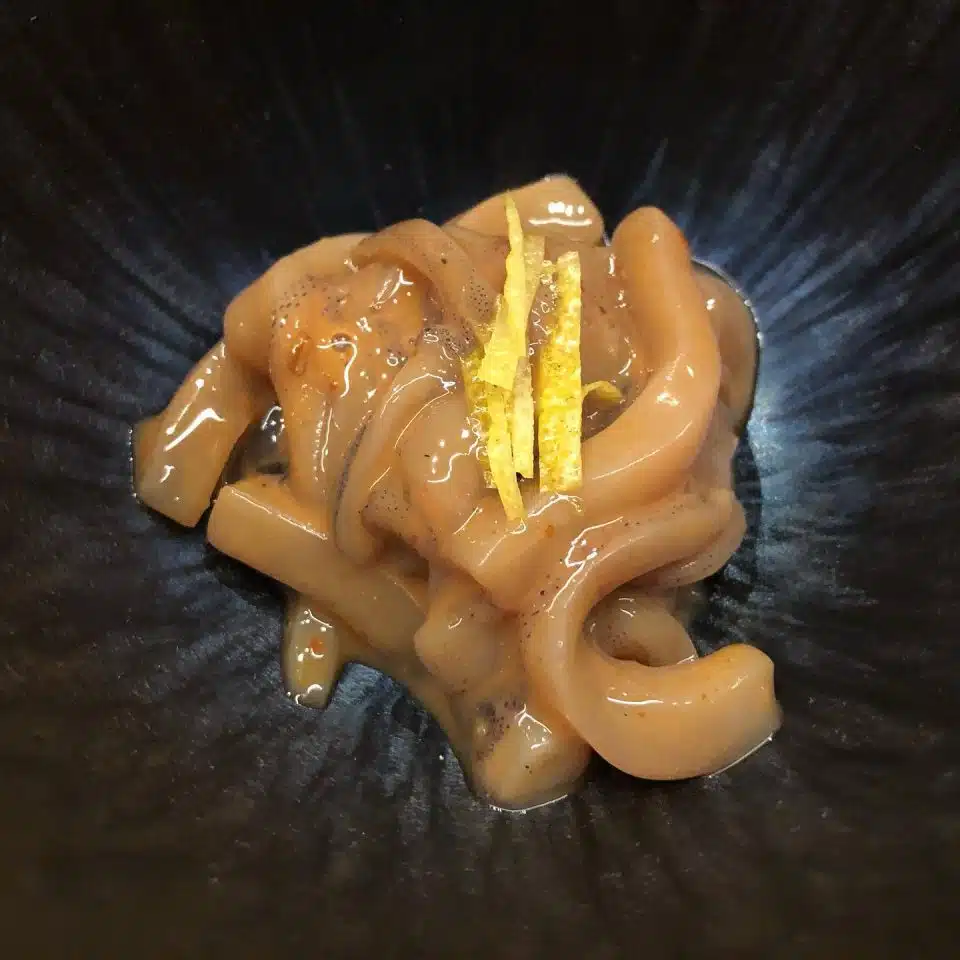
Just as we have peanuts to go with beer, the Japanese have shiokara for sake. Shiokara is considered an acquired taste that dates back as far as the 11th century, when food was scarce.
Only two ingredients are required for this traditional dish which can be made from tuna, crab, salmon or sweetfish .First, the grossest of all: seafood fermented in their own viscera and salt. The result is a dull brown paste.
The entire fermentation process requires only 7 to 10 days so it was easy to replenish. Primarily eaten with rice, shiokara was a good source of protein, fat and vitamin D during winter months.
In modern times we find it in pubs where it’s enjoyed for its salty taste that goes so well with alcohol and makes you drink more. Cooks now season the recipe with shichimi pepper, wasabi, mirin and add grated yuzu for taste and flavor.
18. Bat Soup – Thailand, Palau, Indonesia
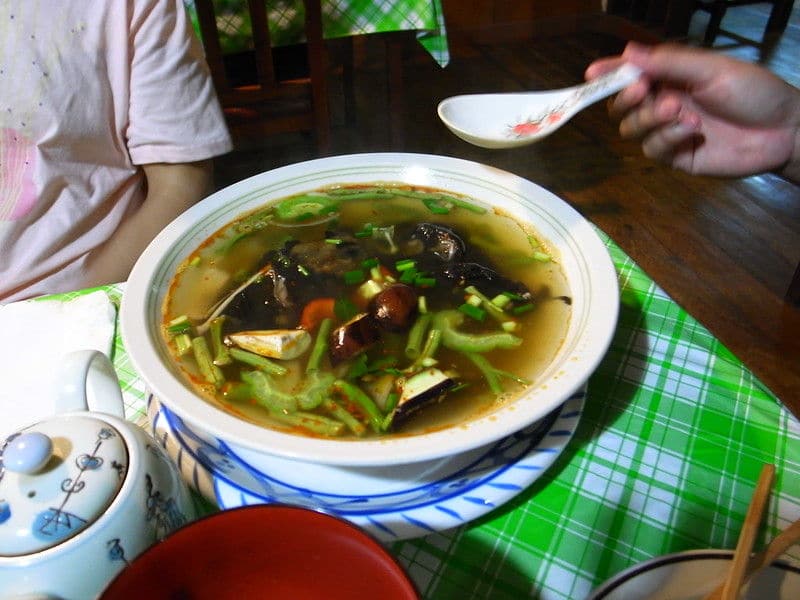
Usually we eat food that is good for our immune system. However, this Thai delicacy could challenge it because the main ingredient – the fruit bat – carries many potentially lethal diseases.
To start the cooking process, a live bat must be drowned in boiling water.
Piece of cake right? Then, it’s cooked on a low heat and seasoned with herbs and spices. If it happens to emit an odor reminiscent of urine, garlic, onions, chili pepper or beer can be added to help reduce the smell. The flavor is said to be reminiscent of chicken
Bats fans can choose from various cooking methods: grilled, barbecued, deep fried, stews and stir fry.
However, concerns about the health hazards of eating bats have risen, especially since a potential link with the spread of Covid -19, and if it is not actually illegal to eat bat soup in all countries, it is certainly a taboo. You can find the recipe here.
19. Witchetty Grub – Australia
Eating a Witchetty Grub in The Outback of Australia
Witchetty grubs are almond flavored “bushmeat ”first eaten by Aborigines in Australia. When lightly cooked the skin crisps like roasted chicken with a scrambled egg texture inside. The freelance photojournalist Peter Menzel describes them as being ‘like nut-flavored scrambled eggs and mild mozzarella, wrapped in phyllo dough pastry. ”
When you pick your own witchetty grub don’t forget not to eat the head because as a defense mechanism they secrete a revolting brown liquid.
20. Shirako (Fish Milt) – Japan, Singapore, South-East Asia

We have saved the best nasty food for last.
But before you rush to try this mayonnaise-like white paste you should know that it is fish semen. Sperm sacs of male cod to be more precise. Ignore that thought and you may discover that you might like the rich fishy taste.
Translated to “white children” this delicacy is served on the top of the rice, fried in tempura batter, grilled or on top of a savory custard. For a novice eater, tempura batter is recommended, while a more experienced taster can go for raw shirako on top of sushi.
The season runs from December through February, so if you’re visiting Japan, these are the best months to try it. For more information, check out our guide on milt.
21. Raw Horse Meat

For many people horse meat is a culinary tabu and eating the meat of these precious animals is unthinkable, but in many countries around the world horse meat continues to be part of the local cuisine.
Horse meat is a staple food in many Central Asian countries such as Uzbekistan or Turkmenistan, but if you abhor the thought eating it then you’ll probably find sakuraniku the most disgusting.
Sakuraniku is a Japanese delicacy where thin raw slices of horse meat are accompanied by ground ginger, garlic, spring onion, and a soy sauce dip in a dish called basashi.
22. Cui (Guinea Pigs)
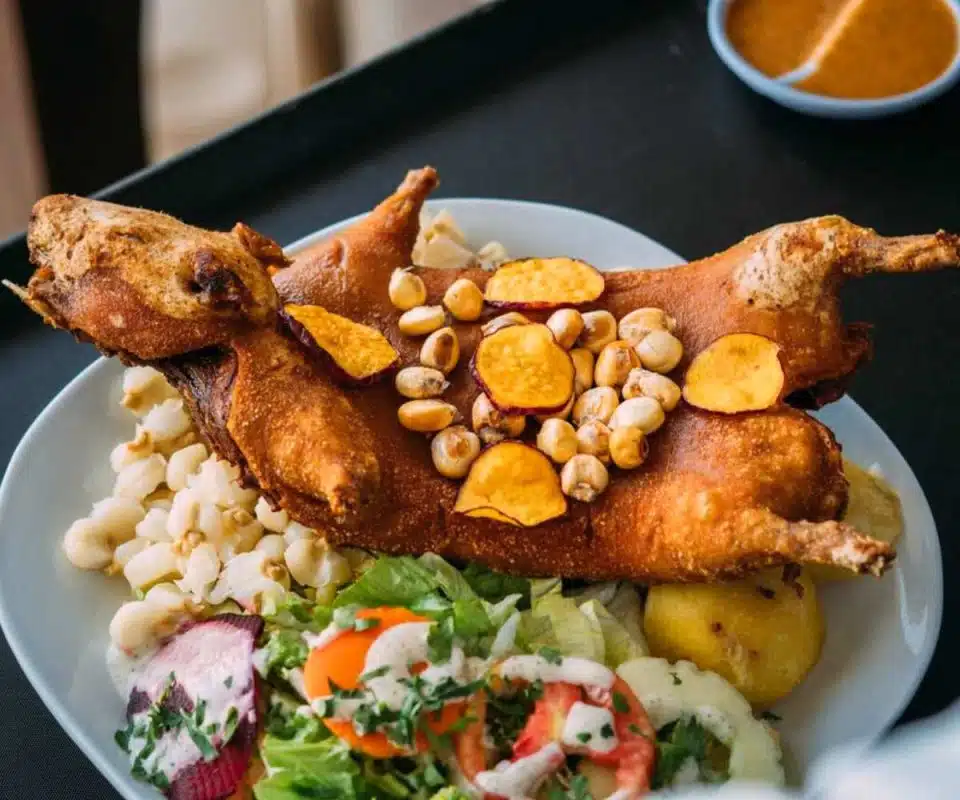
There’s nothing disgusting about the guinee pigs, but would you eat these adorable creatures? Turns out that guinee pigs are a local delicacy in Peru and are regularly eaten in Peru’s rural areas – an estimated number of 65 million guinee pigs are eaten every year.
23. Baby Mice Wine – China, Korea

If you’ve ever wondered how gasoline tastes then you should take a quick trip to South China or Korea and try the baby mice wine. This so-called health tonic is made by drowning infant mice in rice wine and then letting it ferment and absorb the rodent flavor.
In ancient times when villagers ran out of money to buy medicine, they turned to this traditional wine to cure their ailments. The strange concoction is reputed to have many healing properties that include curing hepatic and liver disease as well as asthma.
Still not convinced? We assure you that only the best ingredients are used. Only mice that are less than 72 hours old, have not opened their eyes yet and are totally hairless are used. At least a dozen of these babies are left to ferment in each bottle for 12-14 months.
You can get very drunk very fast from this wine – which is a good thing as it may make you forget this experience.
24. Coconut Worms
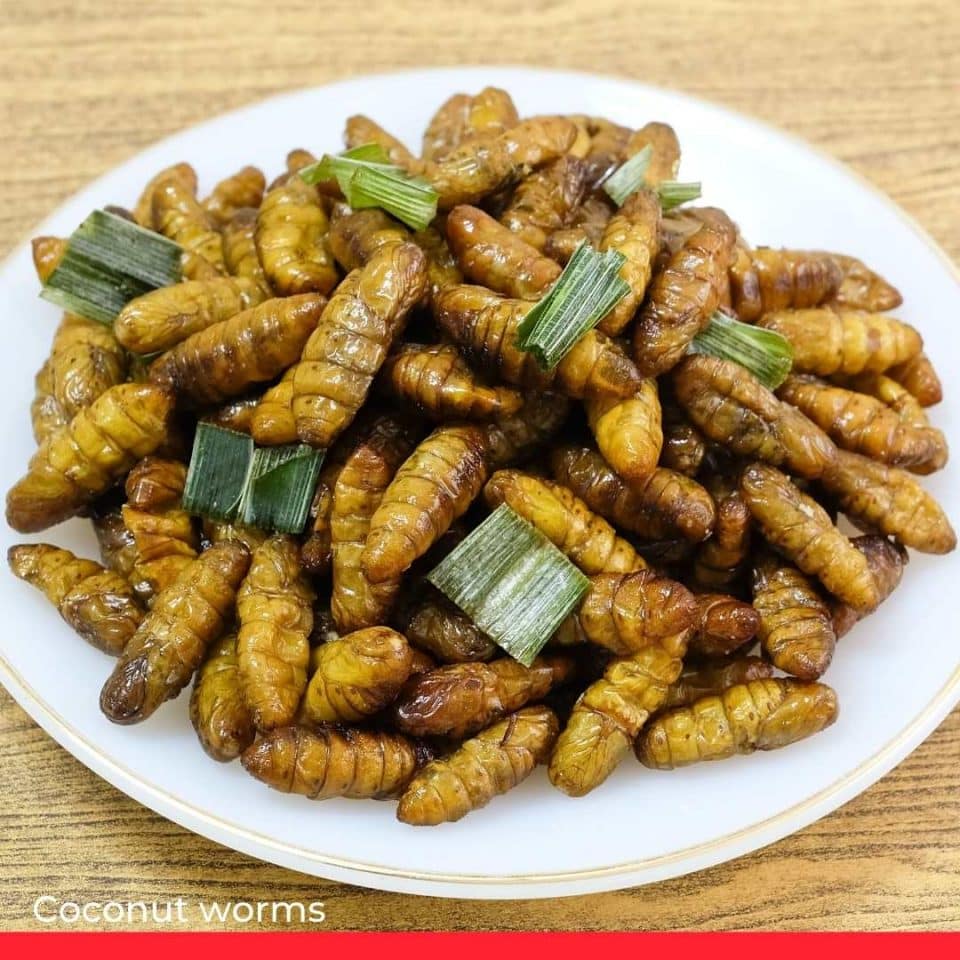
Another dish that’s worth a place on our list of weird foods is coconut worms. A well-liked dish in Vietnam, it’s definitely an acquired taste, and many people can’t even bring themselves to try it because it virtually has no visual appeal!
The worms are usually served alive with some Vietnamese fish sauce. Delicious, right? Don’t feel bad about eating them though as coconut worms are very harmful to coconut trees, so this is one way of getting rid of them.
But if live worms are not really your idea of comfort food, you can enjoy them deep-fried or grilled. Bon appetit!
Do you have your own special food that turns the stomach? We’d love to hear what your top 20 disgusting foods look like. Please leave a comment below with your favorite ones. And if we left out any nasty food you know off please let us know.
For more nasty drinks check our list of the most disgusting drinks around the world.

The post 23 Most Nasty, Disgusting Foods in the World appeared first on Chef's Pencil.
from Chef's Pencil https://ift.tt/LSw8Bvs
via https://chefsspenncil.blogspot.com

No comments:
Post a Comment